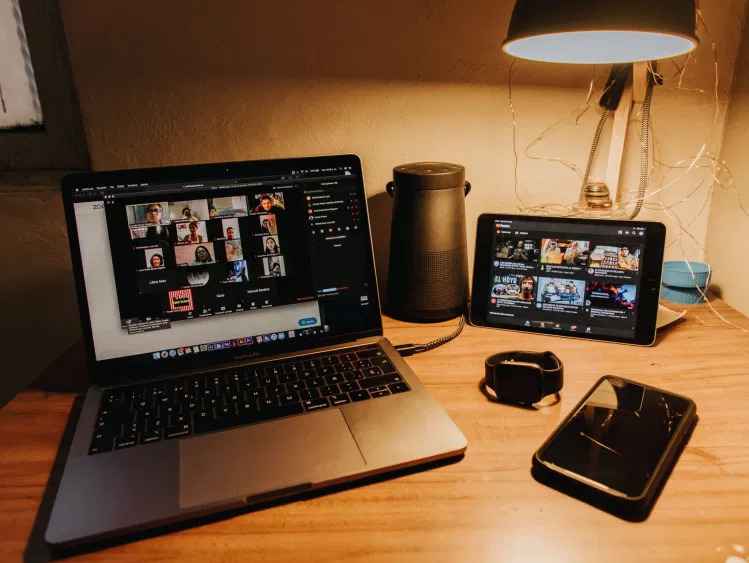Student engagement continues to be a persistent issue
Teachers get creative to get students engaged during pandemic
May 12, 2021
With multiple devices around students turning their camera off, disengaging becomes a choice many make.
“It’s just disheartening as a teacher,” says 10th grade English teacher Jennifer Davis in regards to a lack of student engagement during the pandemic. “In just an emotional sense it’s kind of lonely when you ask a question and students don’t respond. When I set up an activity in breakout rooms and I join to see that no one has their camera on and no one is really engaging . . . it’s upsetting.”
Teachers and students alike have endured many challenges during distance learning, yet one still remains an issue: student engagement. While many teachers have come up with strategies to target the issue, they still, daily, are faced with disengaged students.
Many teachers understand that students’ may not have the best circumstances in which to be learning and that some may be dealing with stress. For some teachers this motivates them to look at their own teaching and try to make content more engaging.
English teacher Narine Tatevosian tackles the issue by tying students’ grades to participation. “At the beginning of the school year I did a poll with my students where most of them confirmed that if their cameras were off it was very unlikely that they were paying attention,” Tatevoisan said. “Everyone’s situation is different. That is why at the beginning I explained to students and parents my side. I want to respect students’ privacy but I also want to let them know my side of the situation.” Some teachers look at the issue from a different perspective.
The issue motivates freshman English teacher Marian Azizian to look at her own teaching methods and tweak them to get more participation. “Students not participating motivates me to look at my teaching methods. I go home and think about what I can do differently to be more engaging, what kinds of questions should I ask, what kinds of content should I use, ” Azizan says. “I try to experiment with different types of content to make the lesson more interesting and lively.”
Not only does a lack of engagement affect the teacher, it has effects on other students. “In all my classes most students do have their cameras off and don’t participate,” freshman Elen Hakobyan says. “First of all, I feel bad for my teachers because I know that they are going through this too and they are doing their best to teach. Personally, it affects me too because when you’re in breakout rooms and want to participate but the others don’t engage it is really discouraging to continue to do the activity assigned,” Hakobyan says. “You just feel so alone when you talk and hear no one respond.”
Health teacher Narbeh Der-Gevorkian reports that up to 60 percent of students in his classes are not engaged in the lesson. “It discourages you to continue to teach at the best level that you can,” Der-Gevorkian says.
Similar to Der-Gevorkian, Tattevosian also feels that no engagement from students discourages her. “It’s very very discouraging, like you don’t even want to try. Though it may not seem that way the teachers have been doing way more than they have before and when you ask questions or say something and their cameras are off it’s just demoralizing,” Tatevosian says. “You feel like you’re making no difference.”
The effect of virtual learning is starting to show. The Philadelphia Inquirer reports “The data are still spotty, but what’s there shows students nationally are performing worse on assessments than peers in years past.” School districts across the country are also met with an increase in poor attendance. To address these issues many school districts have been investing large sums of money to help create summer programs that will fill in the gaps for many students.
Hakobyan believes that a big reason is a decrease in motivation among students. “Having the motivation to participate and to keep going can be difficult to find. It is fairly easy for us to get distracted or to feel that participating isn’t important,” says Hakobyan. “There are times where I feel like turning off my camera and not participating, but I know that engaging and trying will help in the future.”
Clark reopening its doors serves as a light of hope that next year more students will be on campus and classes will be back to normal. “I’m looking at this from a positive point,” Hakobyan says. “Knowing that school will be open next year for more students to return keeps me motivated to push through a little more.”
